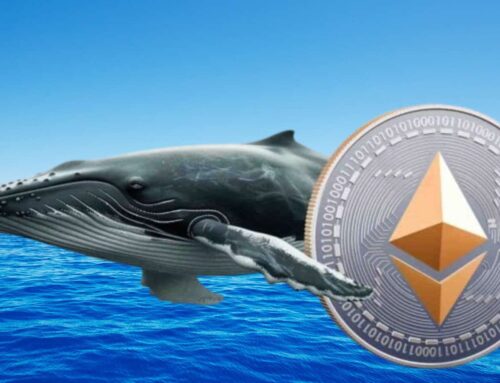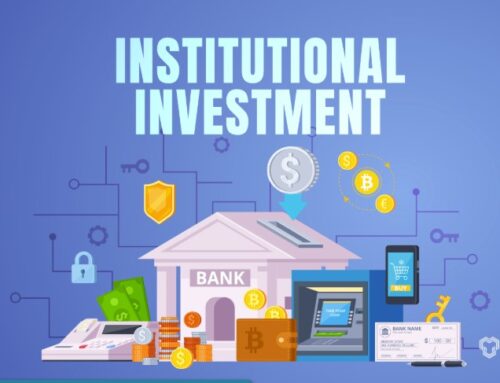It’s Getting Easier For US Car Owners To Go Electric
September 18, 2023
By Guest ContributorPublished6 hours ago 0 CleanTechnica
Sign up for daily news updates from CleanTechnica on email. Or follow us on Google News!
Since the beginning of 2022, electric vehicle sales in the United States have been downright electrifying.
Last year, US drivers bought more than 800,000 new electric vehicles (EVs), 65 percent more than in 2021, even as overall car sales declined. Those 807,956 EVs accounted for 5.8 percent of all new cars sold, an increase from 3.1 percent in 2021.
Thanks largely to federal tax incentives, lower sticker prices, and more available models, EV sales have continued to surge in 2023. The 554,140 EVs sold during the first and second quarter of this year represent nearly a 50 percent jump from the first half of 2021, and sales are on pace to surpass a record-breaking 1 million by the end of this year.
That’s a far cry from just six years ago, when EVs were considered a niche technology (and the fossil fuel baron Charles Koch and his minions wanted to keep it that way). Today, the Union of Concerned Scientists (UCS) projects that 50 percent of US passenger car sales could very well be electric by 2030. If that happens, EVs could make up 60 to 70 percent of the cars on US roads by 2050.
Given the climate crisis, which seems to worsen every day, the sooner the better. After all, the transportation sector is the largest contributor of US anthropogenic global warming emissions, accounting for 29 percent as of 2021, and the majority of those emissions—81 percent—come from cars and trucks. (The rest come from planes, trains, ships, and boats.) In other words, cars and trucks are responsible for 23.5 percent of total US heat-trapping emissions, nearly as much as the electric power sector, which contributes 25 percent.
To avoid the worst potential consequences of climate change, we will have to transform the transportation and electric power sectors in tandem. And while the recent exponential growth of EVs is encouraging—and new federal initiatives will likely turbocharge it—there is still a way to go to overcome lingering consumer hesitancy about EVs.
I recently sat down virtually with one of UCS’s top EV experts, David Reichmuth, a senior engineer in the organization’s Clean Transportation Program, to get a better idea of EVs’ near- and long-term prospects. Before joining the UCS staff in 2013, Reichmuth—who has a PhD in chemical engineering from the University of California, Berkeley—worked at Sandia National Laboratories in Livermore, California, where he conducted a cost-benefit analysis of the relative benefits of vehicles powered by batteries, hydrogen fuel cells, and petroleum.
EN: As I mentioned in my introduction, EV sales in the United States are growing quickly. This has been particularly true in your home state of California, which historically has set the clean car agenda for the rest of the country because of its waiver under the Clean Air Act to set its own air pollution standards. What is happening in California, and how quickly could that be replicated in other states?
DR: California hit a new milestone for EV sales midway through 2023: One in four new passenger vehicles sold in in the state from April through June was a plug-in car, truck, or SUV. That’s amazing progress from just 10 years ago, when plug-in vehicles sales in the state were just a tiny percentage of new vehicles.
Another sign of the rapid change occurring is that, for the first time, Tesla was the best-selling brand in California in the second quarter, edging out Toyota for the top spot. The Tesla Model Y was the top-selling model of any car or truck in the state, more than doubling the sales of the Toyota Camry, the best-selling gasoline car, and the best-selling truck or SUV, the Toyota RAV4. San Francisco Bay Area drivers are setting the pace. During this year’s second quarter, more than 40 percent of new car sales in Alameda, San Francisco, and Santa Clara counties were plug-in electrics.
California is ahead of other states for a number of reasons. As you mentioned, it can establish more protective vehicle emissions regulations than the federal government, and it now requires manufacturers and dealers to sell an increasing number of zero emission vehicles, culminating in 100 percent of sales by 2035. Other states are free to adopt California air pollution regulations for vehicles, and so far six states—including Massachusetts, New York, Virginia, and Washington—have signed on to the 2035 standard, and seven other states are in the process of adopting it.
California is also a leader in EV tax incentives. Since 2010, the state’s clean vehicle rebate program has issued half a million rebates totaling $1.2 billion to help California drivers switch from gasoline to electricity.
EN: California is also ahead of the rest of the country when it comes to EV charging infrastructure, right? One worry prospective EV owners have is about the number of chargers in their community. What’s on the horizon for charging infrastructure?
DR: California currently has more charging infrastructure than other states, but new funding from the National Electric Vehicle Infrastructure Formula Program, which is part of the Infrastructure Investment and Jobs Act, will expand access to charging across the country. In addition, more automakers are pledging to invest in public charging networks, and most of them have agreed to adopt the North American Charging Standard, a single, fast-charging standard commonly known as the Tesla plug. Taken together, EV owners will soon have more options to charge when on the road.
EN: That brings up two related questions. Can the electric power grid handle all of the EVs that will be on the road in the next few years? And will the grid be able to handle all of the EVs that will be on the road down the road?
DR: In the short term, no problem. As my colleague Samantha Houston has pointed out, there is more than enough power from the grid to charge all the electric vehicles purchased over the next few years.
Over the long run, the grid will be able to accommodate the transition to electric vehicles if planners ensure the system keeps up with growing demand. And there is a lot going on to make that happen. Funding from the aforementioned infrastructure act and the Inflation Reduction Act, along with ongoing Federal Energy Regulatory Commission and Energy Department initiatives, will all accelerate grid modernization. And, keep in mind, the jump in demand from EVs won’t happen overnight. Even with 100-percent EV sales by 2035, only about half the cars on the road will be electric.
EN: Besides the demand EVs will have on the electric grid, we should not lose sight of the fact that EVs have the potential to sustain the grid. Last month, General Motors announced it plans to equip all its electric cars and trucks with two-way charging technology so the vehicles can supply backup power during blackouts. How significant is that?
DR: Adding EVs to the grid is unlike other typical demands, such as air conditioning or refrigerators, which have to run at certain times during the day or continuously. Smart EV owners will charge their vehicles at times when there is lower demand or when there is more power generation from clean sources, such as wind and solar.
But, as you said, EVs also could potentially make the grid more resilient. What’s called bidirectional charging would enable an EV to power a home during a power outage or even supply power to the grid when demand is highest. Most EVs now on the market can’t power a home or send power back to the grid, but GM and some other automakers say their next generation of EVs will have this capability. California lawmakers are now considering a bill, which UCS supports, that would help make that pledge a reality. Senate Bill 233 would require all EVs sold in the state to have bidirectional charging capacity by 2030.
EN: Another concern prospective EV buyers have is upfront cost. On average, EVs have a higher sticker price than comparable gasoline-powered cars, and most EV offerings have been luxury models. What is in store on that front?
DR: Many EVs are now sold at a higher price point than buyers are used to paying. That is partly due to the fact that all new cars and trucks—gasoline, diesel and electric—are more expensive post-pandemic. In May, the average new vehicle buyer paid more than $48,000.
That said, we should see some more affordable options soon, such as the new Volvo EX30 and the next generation Chevy Bolt. Federal tax credits also make EVs more affordable, with as much as $7,500 available for some new EV purchases and leases. And next year, there will be a tax credit available for purchasing a used EV.
In any case, EVs are generally cheaper to run and maintain over their lifetime than a comparable gasoline car. We conducted an analysis in 2017 that found that it was cheaper to charge an EV than fill up a gasoline car in the 50 largest US cities. A more recent analysis, published by Energy Innovation just last month, found that it’s now cheaper to charge an EV in all 50 states.
EN: Finally, how much cleaner is an EV? You and your colleagues developed a tool that compares lifecycle heat-trapping pollution from EVs and gasoline-powered cars. What did you find?
DR: When we compared the lifecycle global warming emissions from generating electricity to those from producing and burning gasoline, we found that driving an EV produces significantly lower emissions than a gasoline car. More than 90 percent of Americans live where driving an average EV is responsible for less global warming pollution than the most efficient gasoline vehicle, which gets 57 miles per gallon. Based on where EVs have been sold so far in the United States, driving on electricity produces emissions equivalent to those of a gasoline car getting 88 miles per gallon.
Of course, avoiding driving altogether by using public transportation, biking, or walking would be even better for the environment. But if you have to drive, an EV would produce significantly lower emissions today and, over time, would produce even less as the electricity grid gets cleaner.
By Elliott Negin. Courtesy of Union of Concerned Scientists, The Equation.
Search
RECENT PRESS RELEASES
Related Post




